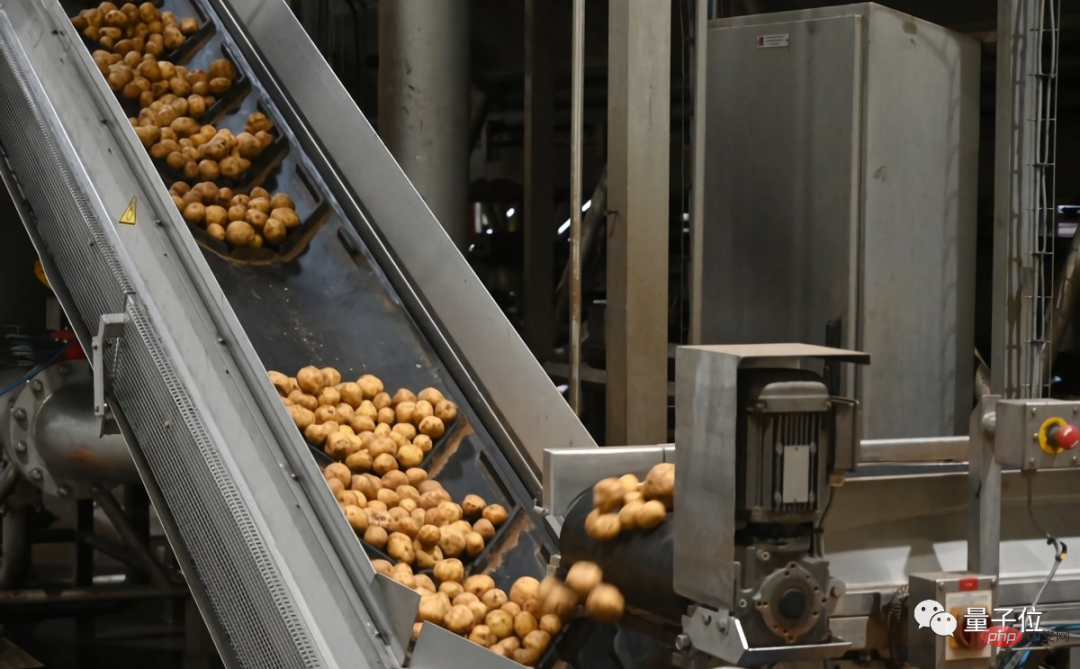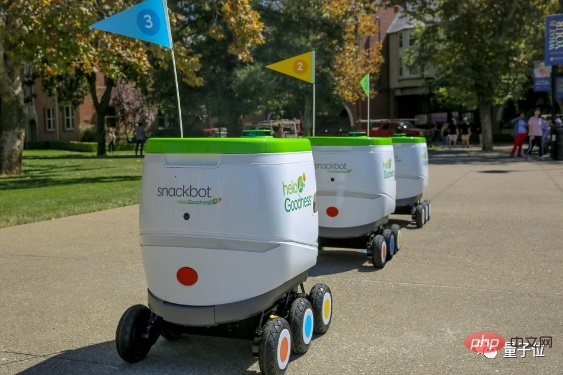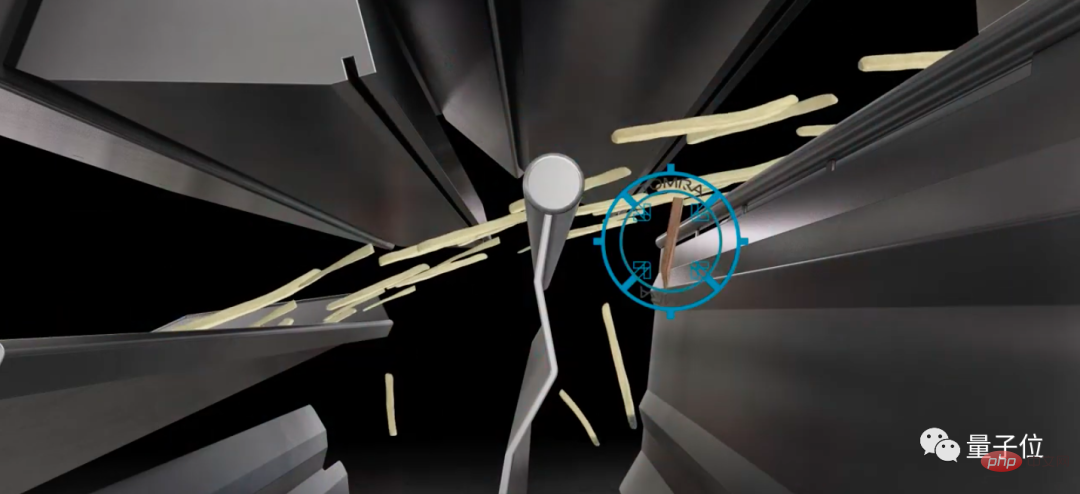 Technology peripherals
Technology peripherals
 AI
AI
 PepsiCo uses artificial intelligence technology to grow potatoes and innovates peeling algorithms.
PepsiCo uses artificial intelligence technology to grow potatoes and innovates peeling algorithms.
PepsiCo uses artificial intelligence technology to grow potatoes and innovates peeling algorithms.
Pepsi is using AI to grow potatoes.
You heard it right! It's the parent company of the Coke brand.
In a vast farmland, Pepsi sensors are analyzing local weather data, potato growth and other data.
Then, the ML algorithm is used to obtain recommendations such as sowing depth, watering amount, and fertilizer amount, and provide them to local farmers.

△ Source: potatonewstoday
This is not just a show.
Pepsi has promoted this strategy to North America, South America, and Europe, providing farmers everywhere with more than one million key data suggestions.
So, why did Pepsi do this?
Look down.

You are a person who made your fortune from cola, how can you grow potatoes?
Pepsi uses AI to grow potatoes, and the most typical country is Mexico.
The local area is suffering from drought and water shortage, but nearly 80% of the water is used in agriculture, but a large amount of potatoes must be supplied to American customers.
PepsiCo is working with a team called CropX to place sensors in potato fields to monitor weather conditions during the planting cycle, and then combine them with their trained algorithms to guide farmers to control drip irrigation and pivot irrigation. amount of water.
In addition to watering, the system also provides farmers with more suggestions, including sowing depth, fertilizer amount, how to protect crops at specific nodes, etc...
According to the control group in the early stages of the project In experiments, they also confirmed that after applying the above technology, not only the water and fertilizer materials were reduced by 15%, but the yield increased.

△ Source: potatoesnewstoday
As for why you help people grow potatoes?
The official statement is - reduce carbon emissions and achieve efficient and sustainable development.
But the root cause is of course not that simple.
PepsiCo not only produces Coke, but is also the world's top potato-processed food manufacturer. It owns a series of puffed food brands such as Lay's potato chips, Cheetos, and Duo Le Crisps.
Because of its control of the downstream, PepsiCo has strong control over the potato supply chain. They can promote irrigation technology and control seed varieties. In 2019, several Indian farmers secretly used Lay's Potato Chips' "special" potato varieties and were sued by the company, demanding each of them pay 1.05 million rupees.
Implementing AI technology in potato cultivation can not only obtain higher-quality raw materials, but also help farmers save money and improve planting efficiency, further integrate their own supply chain, and gain a good reputation.
For Pepsi, of course, it’s a fish-out-of-water situation.

Not only uses AI to grow potatoes
If you look through the public information, you can see that PepsiCo has applied AI to all aspects.
Continue to talk about potatoes.
They have a set of visual algorithms that can observe the potato peeling process and input the percentage of peeling to the whole potato. After training, this algorithm can calculate a set of optimal peeling methods and thickness, optimizing Peeling process.
Its in-house engineers estimate that this AI application can save the company more than $1 million per year just by deploying it in the United States.

△ Source: potatopro.com
AI is also used to check the quality of potatoes. In the Pepsi potato chip factory, they applied a machine vision system using cameras as sensors to calculate the size, weight and quantity of potatoes.
This can save weighing equipment. After all, the price of a weighing component on each assembly line is as high as 300,000 US dollars. It can also be used as the basis data to evaluate the material flow and flow rate on the production line. Productivity.
What’s more interesting is that they also irradiate potato chips with lasers and rely on reflected waves to detect the internal texture and quality.
AI technology is also used in many aspects such as the production of puffed food and beverages such as Cheetos, and factory safety compliance inspection and protection.
AI is also used in the sales process. PepsiCo has a cloud-based data collection and analysis platform called Pep Worx that provides advice on inventory, retail, promotions, etc.
For example, when a company wants to launch an oatmeal product, it can identify 24 million target consumer households out of 110 million American households. According to the data it claims, the analytics platform drove 80% of sales growth 12 months after its launch.
Even autonomous driving is used by PepsiCo.
They have an unmanned delivery vehicle called Snack-Bot. This six-wheeled self-driving delivery vehicle can travel 20 miles on a single charge and can travel at night when it rains.
Functionally, it mainly provides snacks and drinks under the brand to college students. When students place an order through the APP, it will deliver the goods to the designated distribution point without any delivery fees.

In addition to PepsiCo, other food giants are also applying AI.
Pepsi's rival, Coca-Cola, has been trying to feed the full-link data of 60 vending machines to the AI algorithm since 2014, allowing it to generate distribution recommendations. Its transaction volume increased by 15%, and the number of replenishments increased by 15%. Instead, it was 18% less.
In addition, they also use CNN technology to achieve higher-precision OCR. When consumers redeem for another bottle, it can be completed online, and they no longer have to deal with the canteen owner.

In addition to the giants, a team called Tomra has built a French fries analysis machine that can determine whether the length of French fries meets the requirements on the production line (such as 3 -4 inches), and separate products that do not meet the requirements:

Finally, do you know what other AI technologies have been implemented in the food and beverage field?
Reference link:
[1]https://venturebeat.com/ai/2023-will-be-year-of-hope-and-focus-for-ai-says- pepsico-transformation-leader/
[2]https://www.prnewswire.com/il/news-releases/pepsico-chooses-cropx-to-achieve-global-sustainability-goals-301362544.html
[3]https://www.forbes.com/sites/bernardmarr/2019/04/05/the-fascinating-ways-pepsico-uses-artificial-intelligence-and-machine-learning-to -deliver-success/?sh=cd1fea2311ef
[4]https://emerj.com/ai-sector-overviews/artificial-intelligence-at-coca-cola/
The above is the detailed content of PepsiCo uses artificial intelligence technology to grow potatoes and innovates peeling algorithms.. For more information, please follow other related articles on the PHP Chinese website!

Hot AI Tools

Undresser.AI Undress
AI-powered app for creating realistic nude photos

AI Clothes Remover
Online AI tool for removing clothes from photos.

Undress AI Tool
Undress images for free

Clothoff.io
AI clothes remover

AI Hentai Generator
Generate AI Hentai for free.

Hot Article

Hot Tools

Notepad++7.3.1
Easy-to-use and free code editor

SublimeText3 Chinese version
Chinese version, very easy to use

Zend Studio 13.0.1
Powerful PHP integrated development environment

Dreamweaver CS6
Visual web development tools

SublimeText3 Mac version
God-level code editing software (SublimeText3)

Hot Topics
 1385
1385
 52
52
 Centos shutdown command line
Apr 14, 2025 pm 09:12 PM
Centos shutdown command line
Apr 14, 2025 pm 09:12 PM
The CentOS shutdown command is shutdown, and the syntax is shutdown [Options] Time [Information]. Options include: -h Stop the system immediately; -P Turn off the power after shutdown; -r restart; -t Waiting time. Times can be specified as immediate (now), minutes ( minutes), or a specific time (hh:mm). Added information can be displayed in system messages.
 How to check CentOS HDFS configuration
Apr 14, 2025 pm 07:21 PM
How to check CentOS HDFS configuration
Apr 14, 2025 pm 07:21 PM
Complete Guide to Checking HDFS Configuration in CentOS Systems This article will guide you how to effectively check the configuration and running status of HDFS on CentOS systems. The following steps will help you fully understand the setup and operation of HDFS. Verify Hadoop environment variable: First, make sure the Hadoop environment variable is set correctly. In the terminal, execute the following command to verify that Hadoop is installed and configured correctly: hadoopversion Check HDFS configuration file: The core configuration file of HDFS is located in the /etc/hadoop/conf/ directory, where core-site.xml and hdfs-site.xml are crucial. use
 What are the backup methods for GitLab on CentOS
Apr 14, 2025 pm 05:33 PM
What are the backup methods for GitLab on CentOS
Apr 14, 2025 pm 05:33 PM
Backup and Recovery Policy of GitLab under CentOS System In order to ensure data security and recoverability, GitLab on CentOS provides a variety of backup methods. This article will introduce several common backup methods, configuration parameters and recovery processes in detail to help you establish a complete GitLab backup and recovery strategy. 1. Manual backup Use the gitlab-rakegitlab:backup:create command to execute manual backup. This command backs up key information such as GitLab repository, database, users, user groups, keys, and permissions. The default backup file is stored in the /var/opt/gitlab/backups directory. You can modify /etc/gitlab
 Detailed explanation of docker principle
Apr 14, 2025 pm 11:57 PM
Detailed explanation of docker principle
Apr 14, 2025 pm 11:57 PM
Docker uses Linux kernel features to provide an efficient and isolated application running environment. Its working principle is as follows: 1. The mirror is used as a read-only template, which contains everything you need to run the application; 2. The Union File System (UnionFS) stacks multiple file systems, only storing the differences, saving space and speeding up; 3. The daemon manages the mirrors and containers, and the client uses them for interaction; 4. Namespaces and cgroups implement container isolation and resource limitations; 5. Multiple network modes support container interconnection. Only by understanding these core concepts can you better utilize Docker.
 How is the GPU support for PyTorch on CentOS
Apr 14, 2025 pm 06:48 PM
How is the GPU support for PyTorch on CentOS
Apr 14, 2025 pm 06:48 PM
Enable PyTorch GPU acceleration on CentOS system requires the installation of CUDA, cuDNN and GPU versions of PyTorch. The following steps will guide you through the process: CUDA and cuDNN installation determine CUDA version compatibility: Use the nvidia-smi command to view the CUDA version supported by your NVIDIA graphics card. For example, your MX450 graphics card may support CUDA11.1 or higher. Download and install CUDAToolkit: Visit the official website of NVIDIACUDAToolkit and download and install the corresponding version according to the highest CUDA version supported by your graphics card. Install cuDNN library:
 Centos install mysql
Apr 14, 2025 pm 08:09 PM
Centos install mysql
Apr 14, 2025 pm 08:09 PM
Installing MySQL on CentOS involves the following steps: Adding the appropriate MySQL yum source. Execute the yum install mysql-server command to install the MySQL server. Use the mysql_secure_installation command to make security settings, such as setting the root user password. Customize the MySQL configuration file as needed. Tune MySQL parameters and optimize databases for performance.
 How to view GitLab logs under CentOS
Apr 14, 2025 pm 06:18 PM
How to view GitLab logs under CentOS
Apr 14, 2025 pm 06:18 PM
A complete guide to viewing GitLab logs under CentOS system This article will guide you how to view various GitLab logs in CentOS system, including main logs, exception logs, and other related logs. Please note that the log file path may vary depending on the GitLab version and installation method. If the following path does not exist, please check the GitLab installation directory and configuration files. 1. View the main GitLab log Use the following command to view the main log file of the GitLabRails application: Command: sudocat/var/log/gitlab/gitlab-rails/production.log This command will display product
 How to choose the PyTorch version on CentOS
Apr 14, 2025 pm 06:51 PM
How to choose the PyTorch version on CentOS
Apr 14, 2025 pm 06:51 PM
When installing PyTorch on CentOS system, you need to carefully select the appropriate version and consider the following key factors: 1. System environment compatibility: Operating system: It is recommended to use CentOS7 or higher. CUDA and cuDNN:PyTorch version and CUDA version are closely related. For example, PyTorch1.9.0 requires CUDA11.1, while PyTorch2.0.1 requires CUDA11.3. The cuDNN version must also match the CUDA version. Before selecting the PyTorch version, be sure to confirm that compatible CUDA and cuDNN versions have been installed. Python version: PyTorch official branch



